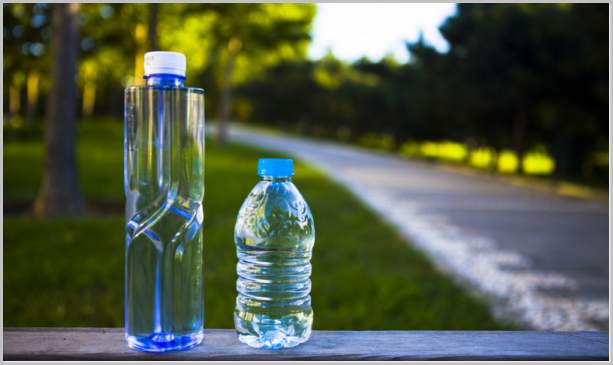In recent years it has become fashionable to drink bottled water. Part of this trend is the convenience of not having to fill one’s own container. Another part is that chlorine and fluoride are added to tap water, which may make the taste unpleasant. A lot of people do not trust the safety of tap water, due to reservoir and groundwater contamination by industry and farming. Some pesticides, heavy metals, and other chemicals can sometimes survive the purification process used for tap water. Bottled water falls into two major categories: purified water and spring water.

Purified water
This is water that has had impurities, bacteria, and minerals removed. Purification can be achieved through a variety of methods. One of them is filtering. Tap water can be purified by using different types of filters, including carbon filters and reverse osmosis systems. Some filtration systems reintroduce beneficial minerals to the purified water after the purification process is complete. Distillation can also be used to purify water. This process involves boiling the water, then catching the steam, killing bacteria in the process, and leaving harmful substances behind, since those do not become gaseous at the same temperature that water does. Deionization is also sometimes used. Bottled purified water is treated through the same kinds of processes, on a larger scale. Caution should be used not to expose distilled water to air, since prolonged exposure can make the water acidic. Cooking in distilled water will pull nutrients out of the food.
Spring water
This is water that has been bottled directly at a naturally occurring spring. It is not chemically treated or artificially filtered. Since spring water rises from underground to the top through porous rock, it has been naturally filtered, so that it does not contain many impurities. The minerals contained in the water are left in place and are harmless, and in many cases beneficial. Commercially marketed spring water has to be tested for contaminants before it can be sold. Mineral water is a type of spring water that has a higher content of minerals than regular spring water. Total dissolved solids (TDS) have to be 250 parts per million (ppm) or more. Another type of spring water is artesian water. Artesian springs are found deeply underground, making them one of the purest and least polluted kinds of drinking water. Natural sparkling spring water contains carbon dioxide.
The difference
The main difference between purified water and spring water is that spring water has to be bottled at the source, and is not filtered or chemically enhanced in any way. Purified water can come from many sources, including tap water. It is treated to remove harmful substances, but in the process beneficial minerals are also removed, although some filtering systems add some minerals back into the water.
Spring water usually tastes fresher, but can sometimes have a very distinctive flavor, depending on its natural mineral content. Purified water can taste flat, especially if it does not contain minerals.

